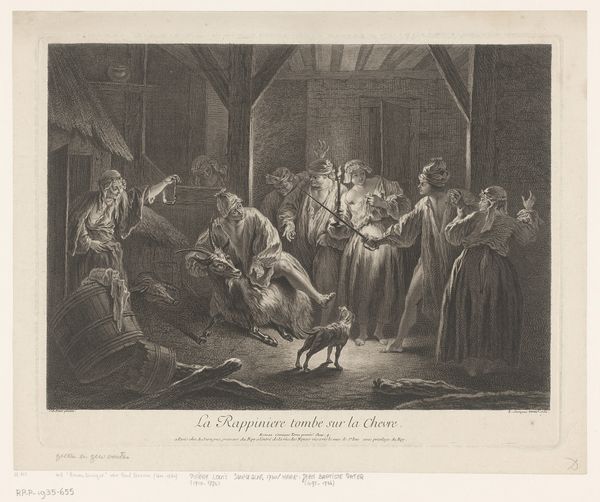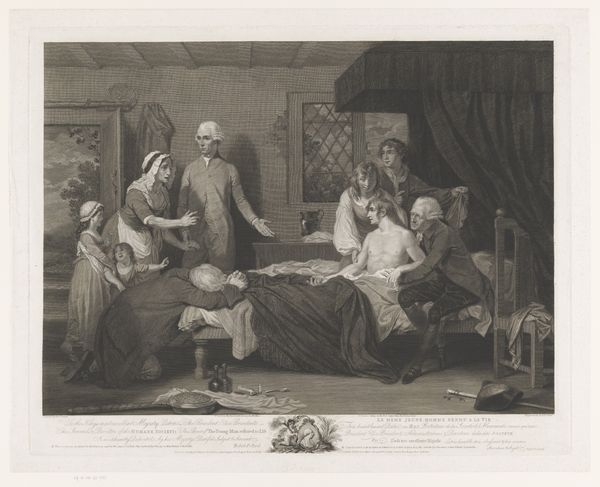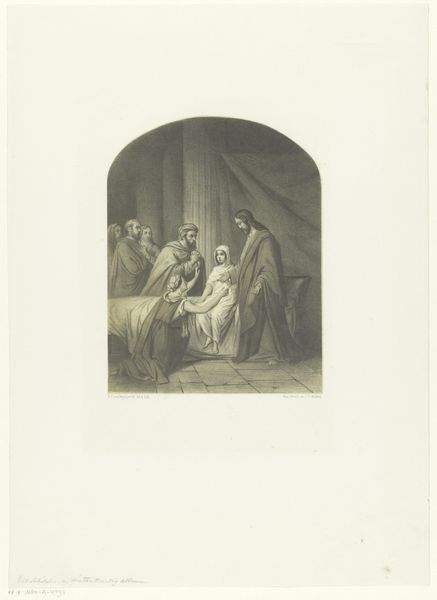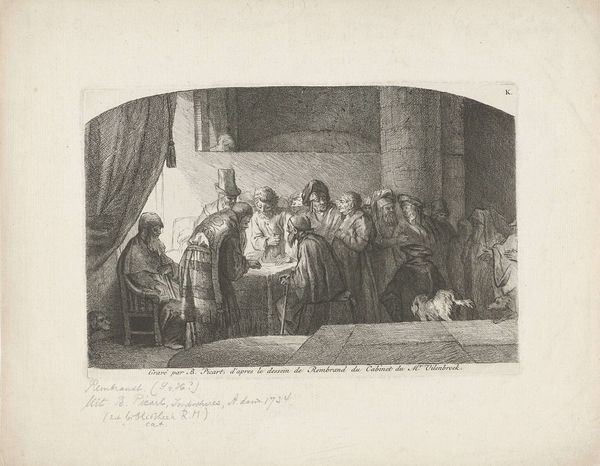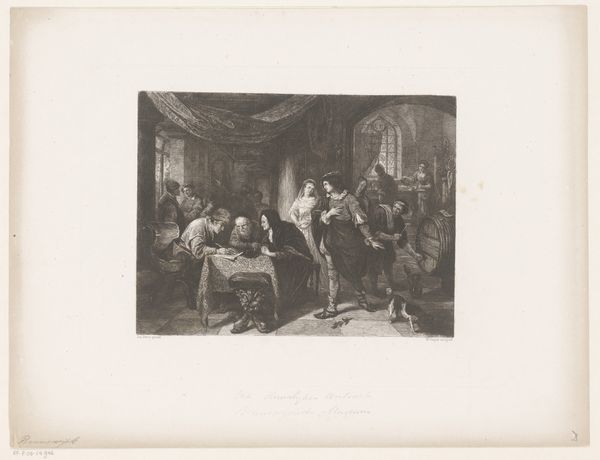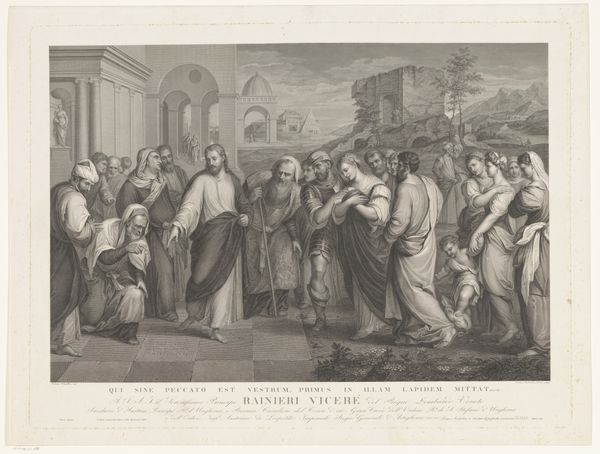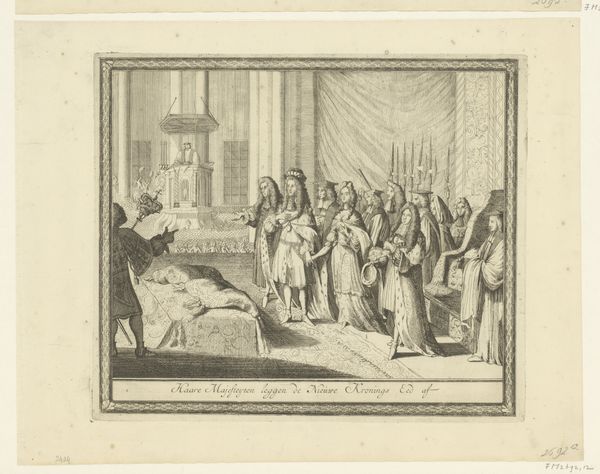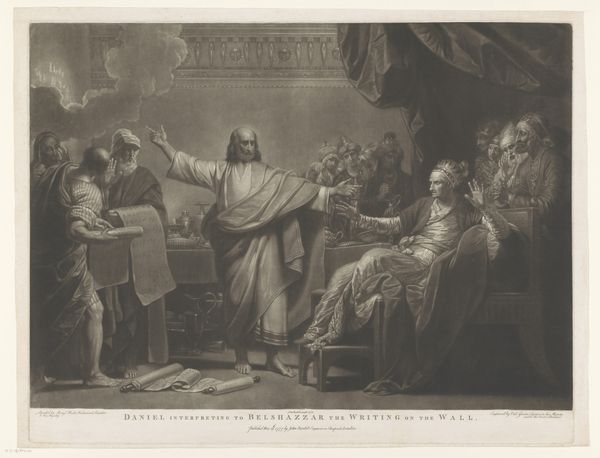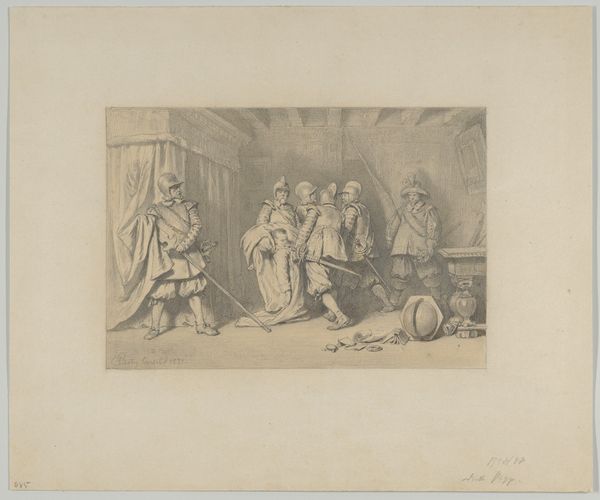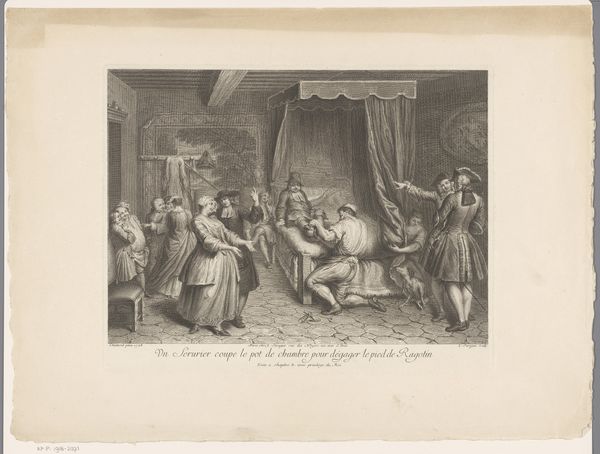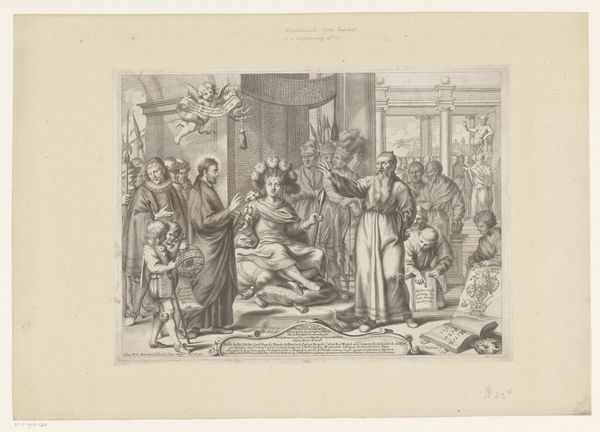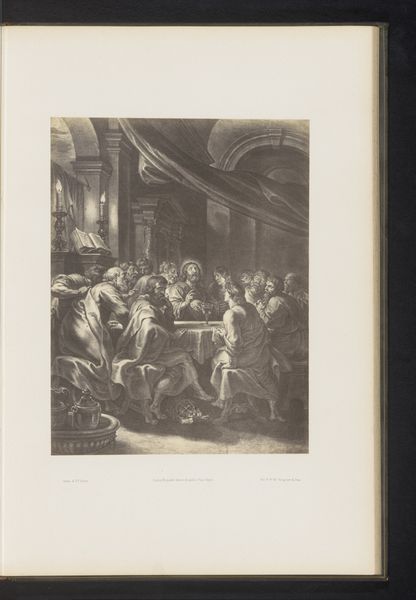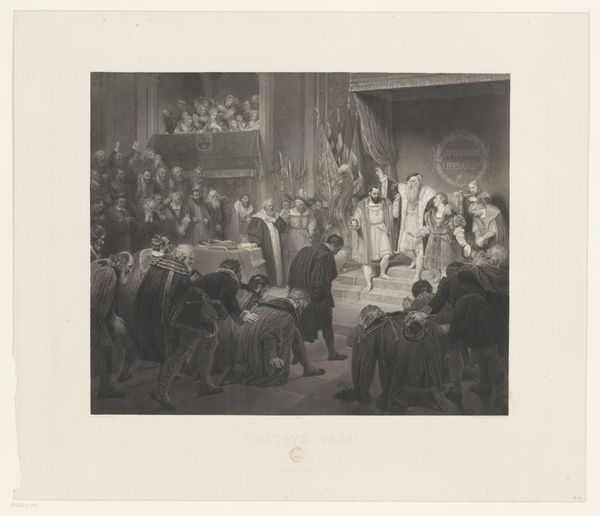
print, engraving
#
neoclacissism
#
narrative-art
# print
#
figuration
#
history-painting
#
engraving
Dimensions: height 494 mm, width 631 mm
Copyright: Rijks Museum: Open Domain
Editor: Here we have Thomas Ryder I’s “Laatste Avondmaal,” or "The Last Supper", an engraving from 1797. There's something so somber about the expressions on everyone’s faces, and it almost feels theatrical. What historical influences can we see reflected here? Curator: The work definitely speaks to the Neoclassical fascination with order and reason. Though a religious scene, it's depicted with a restraint and clarity that reflects the Enlightenment's emphasis on rationality over religious fervor. Consider the rise of secular institutions, even museums themselves, at the time. How would presenting religious events, almost like a history painting, influence the cultural discourse? Editor: I see what you mean, there’s not much emotional outpouring depicted here compared to, say, a Baroque interpretation of the same event. Everyone is very controlled. It almost feels staged, fitting with the "theatrical" impression I had earlier. So, its purpose wasn't necessarily to evoke religious passion? Curator: Precisely! Think of the politics of imagery in a post-Enlightenment context. Depicting a religious scene in such a controlled, almost academic style served a social purpose, to present religion within the framework of reason and civic virtue. This also catered to the elite who were now the main consumers and custodians of art. Would you agree the scene has been sanitised for wider consumption? Editor: Absolutely, by downplaying overt emotion and drama, Ryder makes the subject matter fit within a broader intellectual and social landscape. Instead of just being a religious symbol, it became a shared historical narrative open for interpretation. I hadn't considered how something as simple as artistic style could make an image open to secular discussions and historical analysis. Curator: And that shift in focus, from religious experience to intellectual discourse, significantly altered the public role of art and continues to impact our museum experiences even now. Editor: This engraving is a great illustration of art not only depicting history but actively participating in its creation. Thanks!
Comments
No comments
Be the first to comment and join the conversation on the ultimate creative platform.
